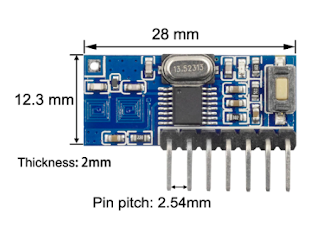What is it about this time?
- I did some redrawing work on certain tracks to make them more 'homogeneous'.
- I
powered certain interface circuits directly via the +5V power supply
from the MSX connector and no longer with the 3.3V coming from the 5V
USB to 3.3V régulator. the goal being to avoid electrical level problems
with the test machine, a Panasonic FS-A1. In theory, 3.3V interfacing
should not pose any problems, but in reality, it does.
- And, I also added a small HF remote control module. This involves controlling remotely and without a physical link, an electrical outlet to automatically restart the MSX computer without having to manipulate the main switch, nor having to 'fiddle' with a RESET connection inside the computer. MSX.
The final circuit should look like this :
Apart from the location of the HF module, the circuit looks almost the same as the previous version. Having written this, I also adjusted the external dimensions of the card so that insertion into the MSX connector no longer presents any potential gaps.
The final appearance should look very similar to this:
As for the code, the two programs concerning the processor which takes care of the USB communication and the one which manages the MSX bus, should not be modified. From the tests done, loading and making the loaded ROM available for the MSX computer works fine now.











































